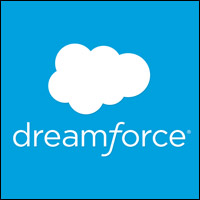
Xactly continues its pioneering ways by analyzing anonymous data collected by its customers in compensation management. If you aren’t familiar with the company or its groundbreaking market analysis, you might be in for a treat.
Its approach is relatively simple but extremely powerful. With the permission of the data owners, Xactly strips out identifying information and conducts sophisticated analysis of sales compensation practices, looking for patterns. The result is revealing, because it comes from a very large data sample, and it is corrected for potential bias and error.
The company’s first effort revealed a small but real pay gap between sales reps based on gender — with women earning less, as is the case in much of the economy at large.
Interestingly, women in sales stayed at their jobs longer than their male counterparts, while outperforming men by about 3 percentage points, both as individual contributors and as leaders. Nonetheless, women were paid less in both base and variable compensation than men.
Lastly, women appeared to be better leaders than men; they built sales teams equally composed of men and women, while male leaders’ teams were mostly male.
Regional Disparities
OK, that’s the gender gap. Xactly’s next analysis compared sales rep compensation across regions of the U.S., dividing the country by time zones: Eastern, Central, Mountain and Pacific.
Sales people in the Central time zone received the highest base pay/variable pay mix as a percentage, but they ranked only third out of four in total compensation, despite having the highest average quota attainment of all regions — 82 percent. In stark contrast, average quota attainment in the Pacific, Mountain and Eastern zones was remarkably consistent at 66 percent, 69 percent and 67 percent respectively.
For Xactly’s purposes, this is very useful, because it helps sales managers and others to compare how they compensate their reps vs. an industry average. More broadly speaking, it would be nice to be able to drill into the numbers to a higher degree.
For example, what is it about the Central time zone that drives sales performance that is on average so much better than other zones? My hypothesis, which probably could be proved with greater access to data, is that larger territories and fewer reps could provide better hunting prospects in the Central zone — but that’s just speculation.
We don’t know if territories are richer in the Central zone, but if so, it would suggest the attainment vs. opportunity ratio might be more congruent. To that point, if attainment vs. opportunity can be so much better in the Central zone, does it mean that the other zones might be overpopulated with reps? Having this kind of information drives all sorts of hypotheses that could improve performance.
From Art to Science
Luckily, Xactly has more data than it is publishing for free, and it is providing deep dive analysis to subscribers of a new offering that’s designed to help managers at all levels to better manage their businesses. This is a great example of unforeseen opportunity inherent in big data.
Prior to big data, one could speculate but never know these answers, unless one wanted to conduct an expensive in-depth analysis of data collected especially for such an effort. However, with all the data Xactly collects, this kind of analysis suddenly is virtually free, and the insights are extremely valuable.
More importantly, this kind of activity is happening all over the front office, as more vendors take to analyzing raw data. Generally speaking, we can point to “before” conditions that lacked data and analysis and that relied on hunches and heuristics — and if that’s true, then the “after” condition has to be labeled “science,” and that’s a big deal.
We’re living in a new era, in which front-office business is transitioning before our eyes from art to science, and it is driven by big data and analytics. We saw it happening in the back office decades ago, as paradigms like ISO9000 and Six Sigma made precise, high-quality manufacturing a numerically based and repeatable thing. However, manufacturing takes on more of the quality of physics while, in my mind, the front office is taking on the character of sociology — as it should.
Structure vs. Agency
People have free will, after all, and the essential question of sociology is how social groups are organized to enable decision-making — whether by structure or by agency. Structure, as you might guess, suggests that people behave in predictable ways, because a social group is organized to funnel people toward desired behaviors. On the other hand, agency suggests that people empower themselves to go outside of established structures to behave in different ways. Life is full of both.
Xactly’s efforts so far indicate that structure is fairly uniform throughout sales culture, with minor exceptions. Somehow, it is apparent that the compensation structure is consistent and skewed against women. Also, remarkably, there are regional differences as well in the structure of compensation plans for all sales people.
Equally significant, it appears that women take agency in slightly different ways than men — for example, staying at their jobs almost a year longer. They may nurture their direct reports better, possibly accounting for superior performance as managers, and apparently they are doing something better as individual contributors too.
There are bound to be differences between groups when we do this kind of analysis, and the purpose is not to expose anyone’s behavior as “wrong.” The purpose is to use data and science to identify opportunities to manage better — and Xactly’s insights into base and variable compensation do exactly that.























































